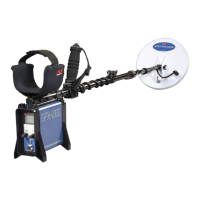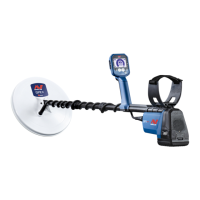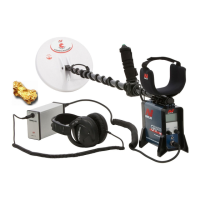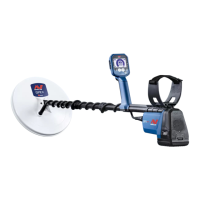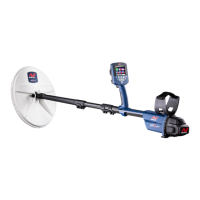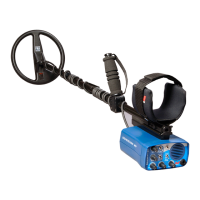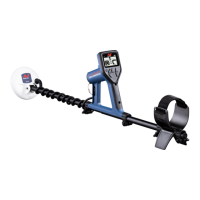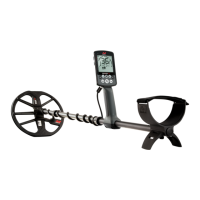Troubleshooting
No sound
• Check that the detector is on (battery, power
cable, connections and LCD)
• Turn the Threshold control fully clockwise
• Turn the Volume Limit to maximum (40)
• Check that the headphones are plugged in
• Try using a different set of headphones or a
different battery
Threshold but
no target signal
• Try testing different coils with a known target
Random noise
• Ground Balance again
• Re tune using the Auto Tune button
• Set the Coil/Rx switch to Cancel
• Reduce Gain
• Move away from other detectors working nearby
• Move away from thunderstorm build-up
Battery will not charge
• Check that there is power to the accessories
socket using vehicle charger
• Check the fuse in the 12V charger plug
(M205–5A)
• Check the battery LED patterns (pg. 20)
Battery not holding charge
• Try an alternative charger adaptor
• Change the battery
'Coil Overcurrent' screen
appears
• Turn the detector off, wait for a few seconds
before turning it back on again
Control Box
This encloses the electronic circuitry
of the detector. The control box
generates the Tx (transmit) signals
sent by the coil and processes the Rx
(receive) signals detected by the coil.
All functions are located on the front
and rear panels of the control box.
Discrimination
The ability of a detector to determine
if a located target is made from ferrous
metal (iron or steel) or non-ferrous
metal (non-magnetic).
Double-D Coils
Two wire windings overlap in the
shape of two D's (one reversed). The
characteristics of a Double-D coil
are stability (especially in heavily
mineralised ground), good depth and
sensitivity, and a very thorough
search pattern.
Electromagnetic Field
Commonly called the 'signal from
the coil'. An electromagnetic field is
generated within the wire windings of
the search coil and this field is pulsed
or sent into the ground. The presence
of a metal target in the ground will
disturb the pattern of this field and this
disturbance is sensed by the receive
system of the detector and indicated to
the operator by an audible 'beep'.
Glossary of Terms
False Signals
These sound similar to target signals
but are caused by other factors.
Common causes for false signals are
incorrect Ground Balance, hot rocks,
signals caused by knocking the coil
on obstacles, etc. With experience,
the operator will learn methods to
minimise false signals and to hear
subtle differences between target
signals and false signals.
Ferrous Metals
Metals composed of or containing
iron. A ferrous item will be attracted
to a magnet and is predominantly, or
completely, made of iron or steel.
Ground Balance
The ability of the metal detector to
compensate for the effects of ground
mineralisation. The GPX-4500 has
'automatic Ground Balance'. When
Ground Balance is used in the Tracking
setting it continually compensates for
changes in the ground mineralisation.
Halo Effect
After a metal object has remained
undisturbed in the soil for a
considerable amount of time a
diffusion occurs around the object.
This has the effect of the object
appearing to the detector to be
a larger size.
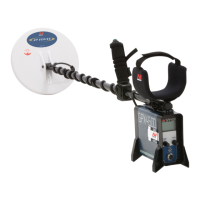
